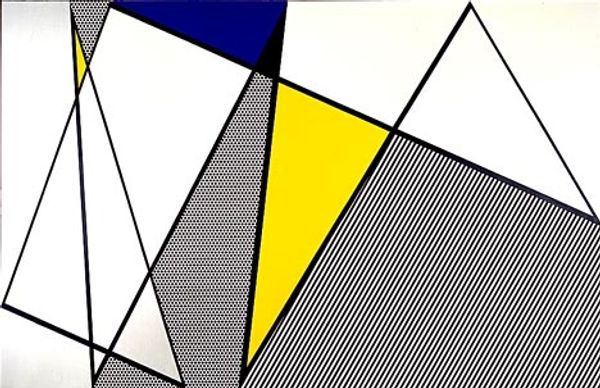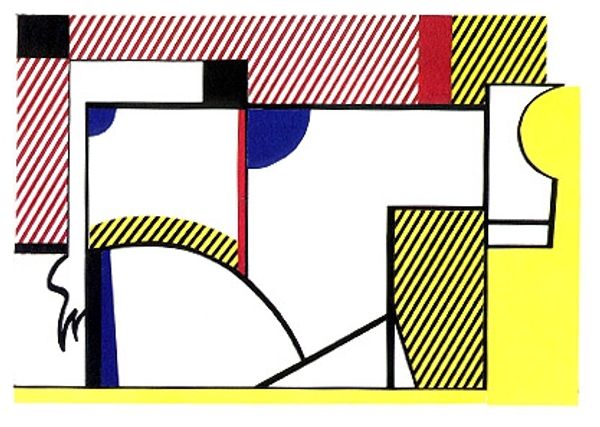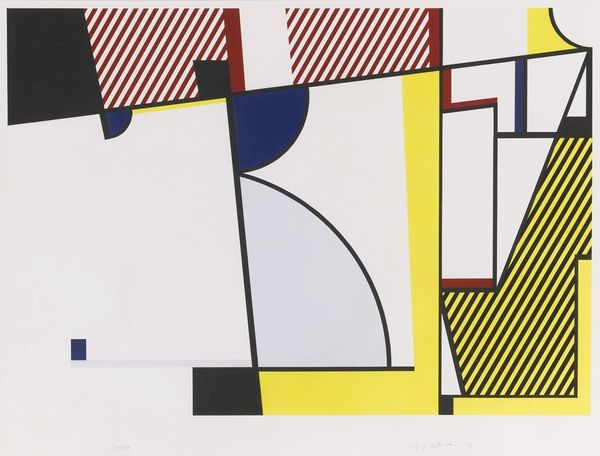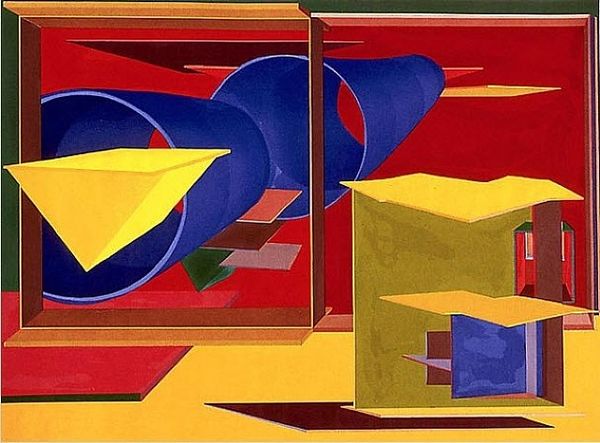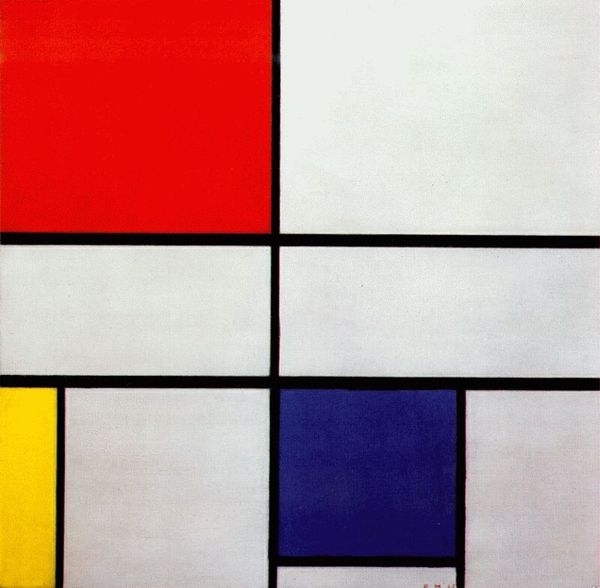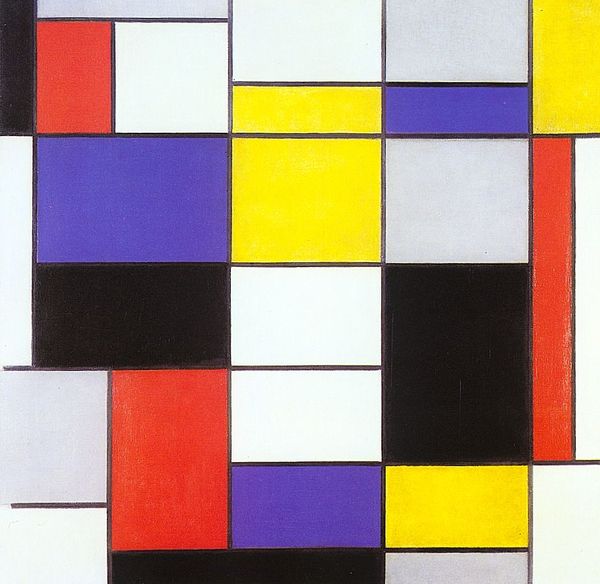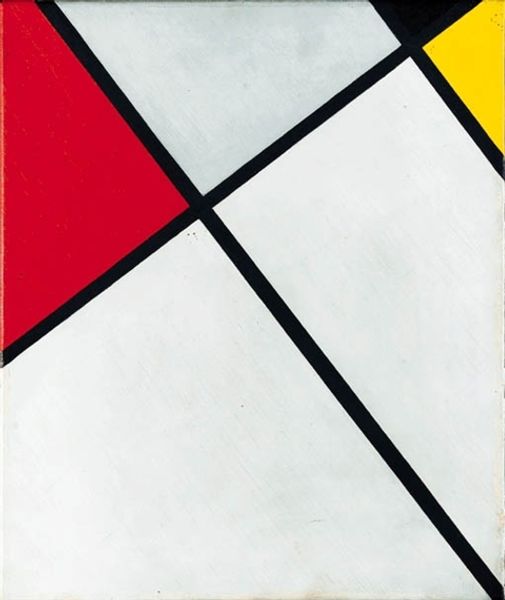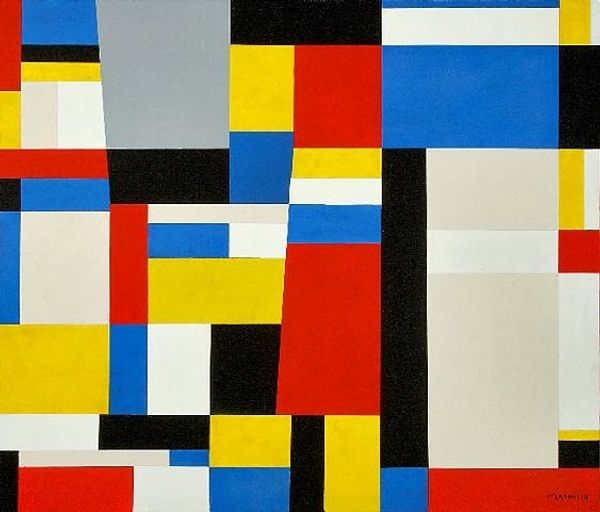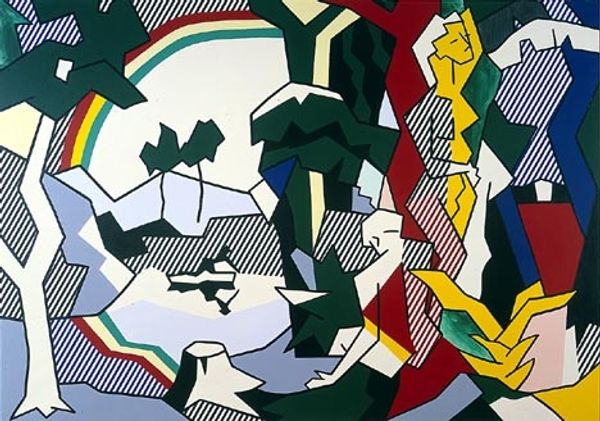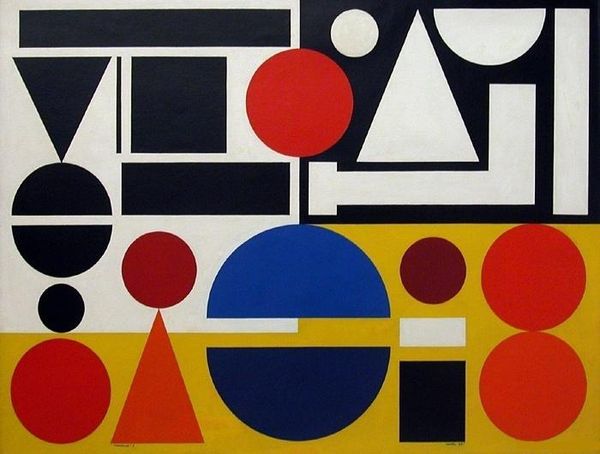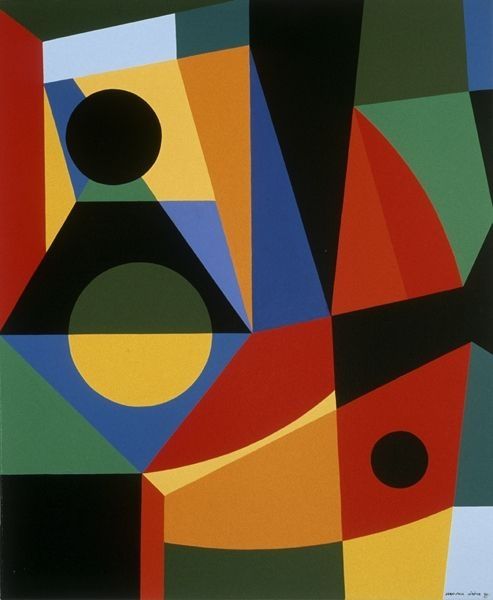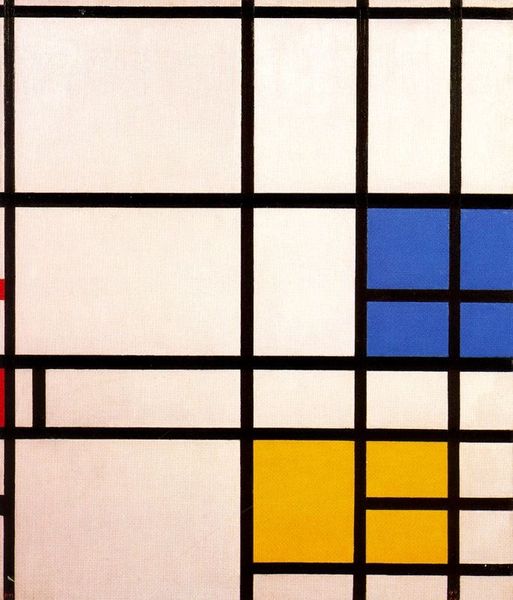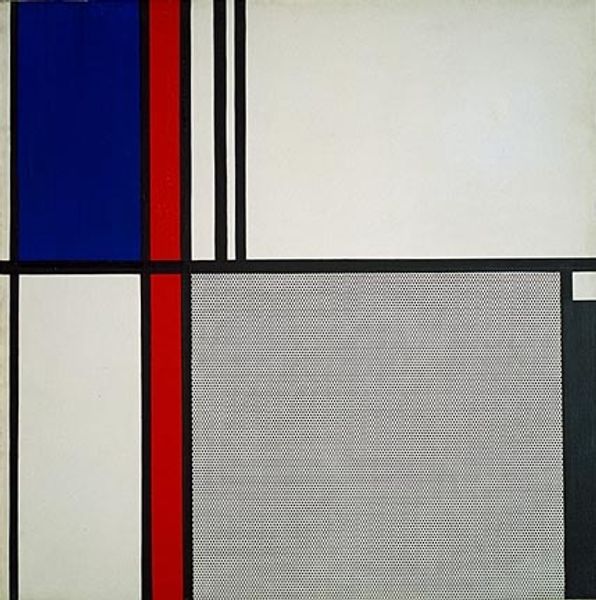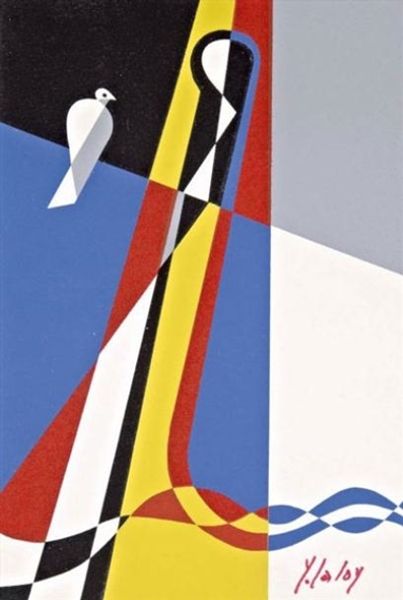
acrylic-paint
#
pop art
#
acrylic-paint
#
geometric-abstraction
#
pop-art
#
line
Dimensions: 73.7 x 86.4 cm
Copyright: Roy Lichtenstein,Fair Use
Curator: Roy Lichtenstein's "Modern painting with wedge", created in 1967, uses acrylic paint to make a bold statement. It's a great example of his signature Pop Art style. Editor: It's striking, isn't it? All those sharp lines and Ben-Day dots create a strong sense of movement, almost like something is bursting forth. I can’t help but think about the way images are manufactured. Curator: Absolutely. Lichtenstein really interrogated the language of commercial printing and mechanical reproduction, appropriating comic book aesthetics for the high art world. We can see this in the simplified color palette. He mimicked the limited range used in mass media. Editor: Which feels so relevant even now. The commodification of art, the mass reproduction of images - these are battles still being fought in the digital age. Looking at the composition, the way he frames geometric shapes with those heavy black outlines makes it read almost like a blueprint. Curator: That's a really interesting observation. Lichtenstein was very interested in formal arrangements, and these kinds of flat compositions owe a debt to earlier 20th-century movements, even Mondrian. However, Pop Art pushed that even further by bringing in everyday iconography and advertising techniques, expanding the conversation about what art could be. Editor: I see a tension here between the supposedly highbrow world of geometric abstraction and the very democratic language of pop art and commodity culture. It suggests that even abstract ideas can be refigured or repurposed, a powerful statement for artists thinking about identity and politics. Curator: The interesting thing to think about is how Lichtenstein used the grid of those Benday dots. They originally referred to industrialized printing and made the pictures seem impersonal, but now in our new digital moment they appear quite hand-made, revealing Lichtenstein's labor and process. Editor: Seeing it that way, it brings a new dimension to the artwork, almost like the dots serve as points of reflection on art's changing role in the culture as well as within broader political dialogues. I appreciate seeing such different approaches working together. Curator: It also speaks to the institutional framing of Pop Art—accepted, collected, and now analyzed within spaces like this. So while he critiqued mass media, the work became part of the system he was questioning. Editor: Right. That paradox—the commercial made fine art—is what makes it perpetually compelling to me, an unending cycle for continued questioning.
Comments
No comments
Be the first to comment and join the conversation on the ultimate creative platform.
